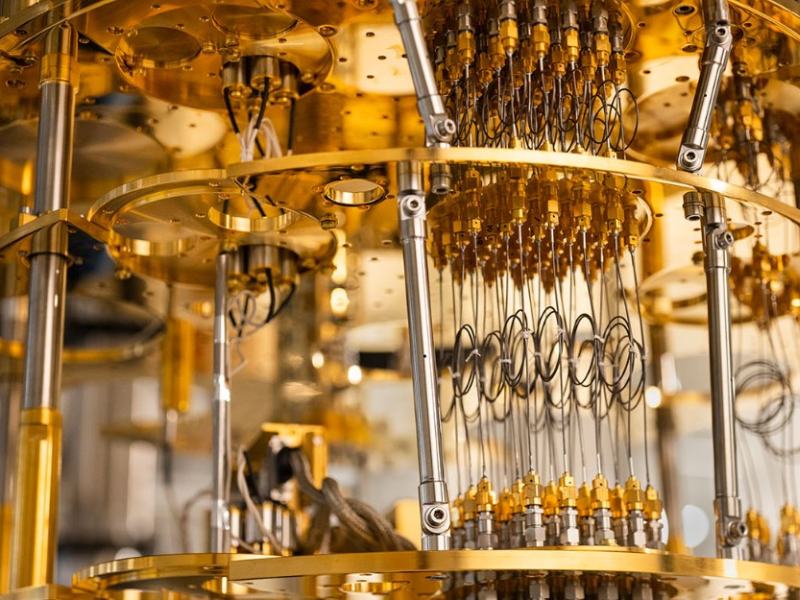The extraordinary details that have emerged about the billion-dollar secret procurement of a quantum computer from Californian startup PsiQuantum can only undermine the public’s trust in the federal government industrial development agenda.
The drip-feed of startling revelations about the privileged access that PsiQuantum enjoyed to the highest levels of government has raised serious questions about the process behind the investment.
These details have only been brought into the light through the persistence of shadow Science minister Paul Fletcher’s office using the Freedom of Information system, and through the Senate Estimates process.
We now know that the Industry department was leading a whole-of-government appraisal of an unsolicited PsiQuantum proposal from late 2022, and that the minister met with PsiQuatum executives in December of that year, and again in January 2023 – this time at the company’s California headquarters.
We know that the government has engaged financial advisors to look at the PsiQuantum deal at a cost of more than $2 million in early 2023. We know that PsiQuantum was given early access to the federal government’s National Quantum Strategy.
We know that the government signed non-disclosure arrangements for discussions with PsiQuantum in March 2023, more than four months before other quantum companies were invited into an expression of interest process.

Having spent eight months in detailed discussions with PsiQuantum and millions of dollars obtaining consultants’ advice, leading Australian quantum firms were given just one month to respond to a single email inviting them to participate in the EoI relating to the procurement of a quantum computer.
Such has been the secrecy of this entire process that the government only acknowledged that it had been in discussion with PsiQuantum and that an EoI had been conducted in February of this year, more than 14 months after a cross-portfolio working group led by Industry had been set up to engage with the PsiQuantum proposal.
It is no wonder that Mr Fletcher says the PsiQuantum investment was a ‘captain’s pick’, and that the EoI process that other quantum firms were invited to respond to was “a reverse-engineered sham” that was used to cover up the fact that an investment decision had already been made.
For those companies that responded to the secret EoI, their proposals were assessed and dismissed in ten days, without any further consultations with these companies. Whatever considerable efforts went into the one month these companies were given to put their proposal together was a colossal waste of time.
The true cost of the PsiQuantum investment – beyond the $940 million shared by the Australian and Queensland governments – has not yet been counted.
While it’s hard to quantify, we know that the decision made it harder for local quantum companies to raise capital. It is possible that these companies are now flight-risks, with incentives for relocation to more supportive environments being real.
The heavy irony of Australian taxpayer’s billion-dollar investment in a US quantum company being made as part of a Future Made in Australia strategy becoming the reason local quantum firms to look elsewhere is heart-stopping. But it’s a possibility.
The secretive process that was used in the PsiQuantum investment will also damage public trust in the way the government distributes the tens of billions of dollars’ worth of industrial support programs that are now progress.
Treasurer Jim Chalmer’s 2024-25 federal Budget outlined $22.7 billion in commitments to programs under the government’s Future Made in Australia agenda. These initiatives have turned forty years of neoclassical economic policy on its head.
A new era of interventionist industrial policy has arrived. ‘Strategic intervention’ is the order of the day.
Whether you are talking about the National Reconstruction Fund, the Industry Growth Program, the Solar SunShot initiative, the Hydrogen Headstart program, the Battery Breakthrough Initiative, the Critical Minerals Production Tax Incentive – these are giant programs, all geared toward this Future Made in Australia.
It was shocking then, that the first big investment that government held up as a key initiative in this FMiA strategy was into a US company, through a secretive process that made the leading Australian quantum companies an afterthought.
The danger here is that this new era of interventionist industrial policy is hijacked – that the policy of ‘strategic intervention’ is misconstrued as a licence for making a captain’s picks.
If public confidence is undermined, these strategic interventions are doomed before they make an impact. If the public faith in the process by which these tens of billions of dollars of interventionist spending is disbursed, then these programs won’t last, and an opportunity will have been lost.
There has not been a federal election in living memory that has been influenced much by industrial policy.
But with cost-of-living pressures running hot, it wouldn’t take too many large investments into foreign tech companies for it to start making an impression.
Billion-dollar procurements run in secrecy should not be how these kinds of public investments are made.
Besides, it won’t have escaped the governments notice that multinational companies can be fickle.
Just as the Australian and Queensland governments were spending $940 million of public money to bring a US quantum company to Australia, the world’s second largest company Microsoft announced it was closing its quantum research efforts in Australia, and shutting its Sydney University-based facility.
Do you know more? Contact James Riley via Email.

